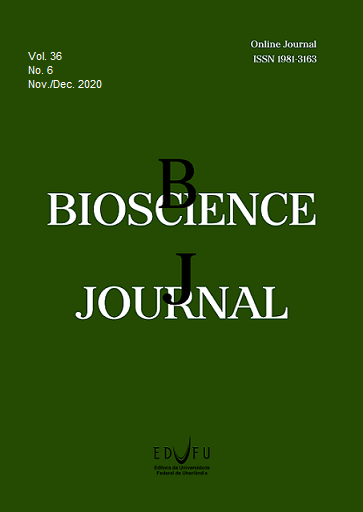How do clonal plantlets of mate respond to different substrate compositions and shading levels?
DOI:
https://doi.org/10.14393/BJ-v36n6a2020-48041Keywords:
Forest species., Ilex paraguariensis A. St.-Hil., Plantlet production., Vegetative propagation.Abstract
Mate (Ilex paraguariensis A. St.-Hil) is an arboreal species of great economic and socio-environmental importance in South American countries. This specie presents several difficulties during seminal propagation, and studies related to plantlet production by vegetative propagation are fundamental for obtaining homogenous mate plantations with high leaf productivity. Therefore, the present study aimed to evaluate the effects of substrate and shading levels on the morphophysiological quality of mate plantlets produced by mini-cuttings. Rooted mini-cuttings of four mate clones were cultivated on commercial substrate, subsurface soil and vermiculite (2:1:1 v/v/v), commercial substrate and subsurface soil (2:1 v/v) or subsurface soil, cattle manure and carbonized rice hulls (2:1:1 v/v/v). After 120 days, the plantlets were randomly distributed on benches to evaluate the effects of 50 and 80% shading screens. Regardless of the clone, the commercial substrate and subsurface soil composition allowed plantlet production with satisfactory development of both aerial part and root system at 120 days of cultivation. Clone 06SM17 produced plantlets with high averages of stem diameter, shoot height, number of leaves, total length, surface area, total volume of roots, and number of root tips. Both shade levels resulted in similar stem diameters, shoot heights, numbers of leaves, and a, b, and total chlorophyll indices. Clonal mate plantlets with satisfactory morphophysiological quality are produced in commercial substrate and subsurface soil (2:1 v/v) under 50 and 80% shading.
Downloads
Downloads
Published
How to Cite
Issue
Section
License
Copyright (c) 2020 Nathalia Pimentel, Mhaiandry Benedetti Rodrigues, Rejane Flores, Dilson Antônio Bisognin

This work is licensed under a Creative Commons Attribution 4.0 International License.





